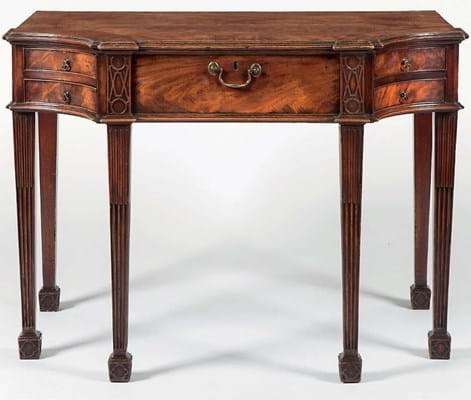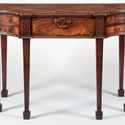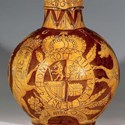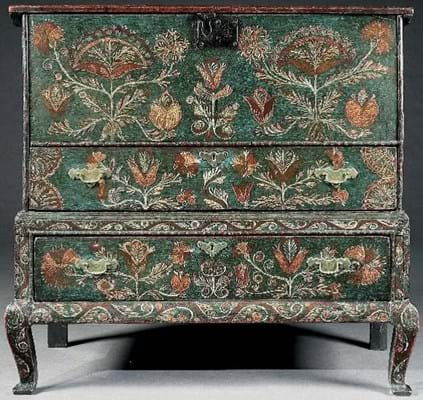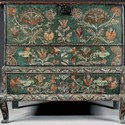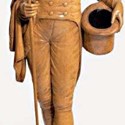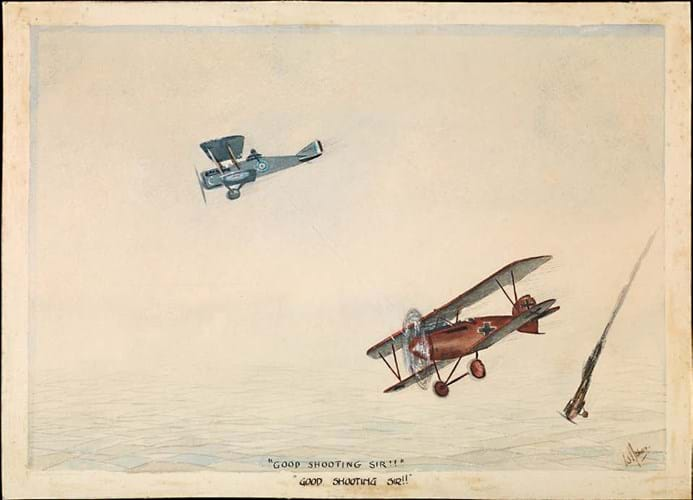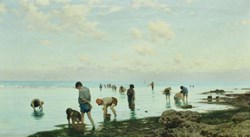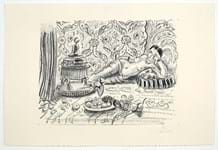“This is very civilised,” she said. “It has given us many opportunities to talk to people, some of whom we already know as existing clients. We’ve been watching the fair for a few years and thought that this was the right time to join.”
Among the other fairs the gallery attends are various editions of Art Basel, run by MCH Group, which earlier this year became Masterpiece’s majority shareholder. And before Masterpiece opened there was speculation that Hauser & Wirth’s participation was a step towards altering the fair.
Cross-collecting
But Hauser & Wirth’s attendance did not represent a fundamental shift in the end – bagging a top stand position in the heart of the fair, it threw itself into the cross-collecting ethos, sharing objects with 18th and 19th furniture specialist Butchoff Antiques, and pulling in one of the top early sales: Hans Arp’s 1928 Cuilère et nombrils which sold for around €1.5m.
It was, it seems, the fair’s ability to absorb change without causing shock that helped its ninth edition, from June 28-July 4, draw to another evidently successful close.
This year, dealer numbers increased to around 160 as the layout was adjusted in the purpose-built venue at Royal Chelsea Hospital. Aisles were widened to help accommodate the crowds – which this year were bigger than ever with an ultimate 16% increase in the number of visitors. During the preview days alone, a total of 11,262 people attended.
Crucially, many dealers agreed, there was value in the volume.
“The great thing about this fair is the visitors it brings through the doors,” said Emma Ward of Dickinson. “Every day we meet good people.”
The highest attendance of museum representatives was reported this year too, including the Metropolitan Museum of Art, British Museum, Rijksmuseum and Getty. One curator, Stephen Harrison of The Cleveland Museum of Art, called the fair “a digestible feast of the world’s greatest treasures for sale”, and praised the breadth of its offerings.
Indeed the diversity of pieces on offer remains integral to the fair, as it seeks to draw in new buyers through aesthetic appeal rather than by emphasising traditional collecting fields. This year, Les Enluminures joined forces with Daniel Crouch in a specially curated presentation, A Brief History of Time: From Matins to Mars, and antiquities specialist Safani Gallery returned to share a stand with fine and decorative art dealership Geoffrey Diner.
Younger audience
Particular attention was paid to the fair’s younger audience. The very young had the chance to take part in guided trips round the fair led by The Little Grand Tour.
These programmes were perhaps responsible for bringing new buyers through in the form of their parents. There was also a symposium for junior curators and dealers which launched this year and the Masterpiece vetting school also returned.
Charles Wallrock of Wick Antiques was pleased both by steady sales and “brilliant” attendance.
“We’ve sold to a number of younger buyers and in general they’ve done a cracking job getting young people in. The kids’ events have worked,” he said.
Others paid tribute to the fair’s provision of spectacular pieces, from the imposing Marina Abramović installation at the fair’s entrance to Blain Southern’s striking piece made of red thread and keys by Chiharu Shiota, State of Being (which sold early in the event for €170,000).
“We’ve sold to a number of younger buyers and in general they’ve done a cracking job of getting young people in
Some dealers noted that sales, particularly for their biggest-ticket stock, were perhaps lower or slower than in previous years.
E&H Manners, which offers pieces priced into the six figures, made sales of some pieces at around £28,000. But, said the gallery’s Errol Manners, “we’re happy if we can sell at around the £25,000 mark to new customers especially. These can happen spontaneously. The bigger sales tend to take longer.”
Stand-out sales
As usual, though, an assortment of stand-out sales was found throughout the event: Lullo Pampoulides, for example, sold a painting of St Anthony of Padua preaching to the fish (c.1740) by Alessandro Magnasco for £65,000; a set of 12 c.1800 rings at the stand of Les Enluminures with the zodiac signs in intaglio also found a new home.
A Giorgio de Chirico oil on canvas, Grande metafisico con squadre (1971), priced at €430,000, sold from the stand of Mazzoleni.
Sims Reed had sold half its 20-piece Jazz set to private collections by the Saturday of the fair.
Masterpiece chairman Philip Hewat-Jaboor dubbed the recent staging “our strongest fair to date”. With plans to expand into other international markets, this is encouraging news.
Watercolour by Biggles' creator
In time for the 100th anniversary of the RAF, Day & Faber sold at Masterpiece this watercolour by William Earl Johns (1893-1968) titled Good Shooting Sir!! from 1916.
Depicting a First World War dogfight, it is one of the earliest depictions of aerial warfare completed by the creator of the celebrated Biggles books. The title conveys the daring of the ‘Boy’s Own’ style that defines Johns’ written work.
The sheet predates Johns’ commission into the Royal Flying Corps. He was shot down in 1918 while on a bombing mission to Mannheim in Germany and remained a prisoner-of-war until the Armistice.
He became a newspaper air correspondent following the publication of his first novel, Mossyface, in 1922. In 1932 he launched the magazine Popular Flying where the Biggles stories first appeared. His art regularly featured in the magazine and in his later novels, but the majority of the illustrations were done by Howard Leigh.
Five similar watercolours can be found in the Royal Air Force Museum, London. This example sold for a figure in the region of £6000.


